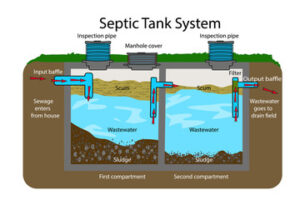Roofing Company is a business that installs and repairs roofs. They offer a wide range of services, including residential and commercial roofing. These companies often have an excellent reputation in their local communities.

Insurance is a must for a roofing company. It protects the business from damage to life or property caused by accidents. Also, it covers the cost of legal actions.
Roofing companies are experts in their field and can provide you with a variety of services that will suit your needs. They can assess your roof, install the appropriate materials, and ensure proper installation to minimize future issues. In addition, they are accountable and can stand behind their work if there is a problem. Experts also operate on a shared understanding with clients, ensuring that the choices they make are informed and mutually beneficial.
Choosing the right roofing company can save you money in the long run. A professional roofing company can help you avoid costly mistakes that could lead to leaks, mold growth, and other problems. They can also help you select the best materials for your home’s specific climate. A quality roof can reduce your energy costs, protect you from the elements, and increase the value of your home.
Experienced roofing contractors have specialized tools for their work, which makes them more efficient and precise than DIYers. They also know which materials are best suited for each project and can quickly find solutions to unexpected challenges, such as weakened joists or hidden leaks.
An experienced roofing contractor can help you navigate the insurance claims process. This is especially important if you live in an area prone to severe weather. A good roofing company will be able to handle the entire process from start to finish, and can even negotiate with the insurance company on your behalf.
When choosing a roofing company, ask for references and review their previous work. You should also determine whether they use subcontractors or complete the job themselves. Also, look for accreditation and licensing – hard copies are preferred. Then, inquire about their workmanship warranties and product warranties. A reputable roofing company will have a solid standing with manufacturers and offer substantial warranty coverage.
Reputation
A roofing company’s reputation is a critical element in its success. This is because it reflects the integrity and ethical standards of the business. These qualities extend beyond client interactions to include relationships with suppliers, subcontractors, and employees. They are also critical for fostering a collaborative work environment that promotes cooperation and efficiency.
Reputation can be built through various marketing strategies, including door-knocking and canvassing neighborhoods. This is a great way to reach homeowners in areas that have been affected by storm damage and to provide them with a quote. You can also use social media to promote your roofing services. Another way to build your reputation is to offer warranties on your work. This will ensure that customers are satisfied with your service and that you are a reliable contractor.
A reputable roofing company will have established a local presence in the community and have connections with builders, contractors, and architects. These relationships can lead to new construction projects, which are a great source of revenue for a roofing company. They will also be able to attract more customers by offering financing options and accepting credit cards. Having a clear business plan is also important for roofing companies because it shows that the company has a solid plan and is a viable investment. This will help them secure financing and resources from investors and lending institutions.
While price and quality are important factors when choosing a roofing company, online reviews play an even greater role in consumer decisions. According to a recent survey, 83% of consumers trust online reviews as much as personal recommendations. This is why it is so important for roofing companies to build a strong online reputation.
The best way to improve your roofing company’s online reputation is by requesting feedback from your customers. Encourage them to write a review on Google, for example, by providing them with a direct link in follow-up emails or handouts after each job. You can also use listings management software to make sure that all of your local business listings are up-to-date and accurate.
Insurance
As roofing is a hazardous job, insurance is essential for all roofing contractors. Roofing companies should have liability coverage, workers’ compensation, commercial auto, and commercial umbrella insurance to protect themselves from financial implication in the event of work-related accidents or incidents. Having this protection will also increase their credibility with potential clients, who will be willing to hire them knowing they are fully insured.
A good roofing company will have professional liability insurance, which covers the costs of defending a lawsuit if one of their clients sues them due to incomplete or unsatisfactory work. It can also cover the cost of legal fees if a client accuses them of negligence, errors or omissions in services provided, or inaccurate advice. It is also important that a roofing contractor has commercial umbrella insurance, which extends the limit of other liability policies.
When selecting an insurance provider for a roofing business, consider their reputation and the types of policies they offer. They should provide personal guidance to help you select the right policy based on your company’s risks and needs. They should also be able to customize your coverage based on your roofing company’s employees, vehicles and value of assets. Additionally, they should be able to advise you on the best ways to reduce your premiums without cutting off any essential coverage.
Besides liability, roofing contractors need workers’ compensation insurance for their employees. This type of insurance pays for the cost of medical expenses and lost wages if an employee is injured on the job. It is also important for roofing contractors to carry commercial auto insurance, which protects their vehicles and drivers. They may use their vehicles for business purposes like transporting equipment, supplies and materials, or they may need to drive their customers around.
The most important thing to remember when choosing an insurance provider for a roofing business is to understand the terms and conditions of each policy. Ensure that you have a thorough understanding of the policy’s inclusions, exclusions, deductibles and limits. Moreover, it is crucial that you choose an insurance company that has a solid track record of paying claims promptly and fairly.
Group buying
Group buying, or collective buying, is an attractive option for consumers and businesses alike. It offers discounted products and services that would otherwise be out of reach. However, there are some drawbacks to group buying that should be considered carefully.
Whether you’re looking for a new roof or simply trying to save money, you can find deals that fit your needs and budget. A group purchasing organization (GPO) can help you save time and money by sourcing, vetting, and negotiating contracts on your behalf. They can also provide networking opportunities with other contractors.
A GPO is an association that leverages its member’s purchasing volume to obtain a significant discount on supplies and services that are normally reserved for large companies. This provides members with the flexibility to choose from a wide range of vendors and manufacturers. GPOs can also help you increase your brand awareness by featuring your company on a group purchasing platform.
For roofing companies, it’s important to focus on branding and innovation to achieve long-term success. Branding builds awareness of your business and encourages customer loyalty, while innovation drives growth and keeps you competitive in the industry. By integrating both of these strategies into your marketing plan, you can guarantee the longevity of your business.
One of the biggest challenges that residential builders face is negotiating favorable pricing on materials. This is especially true for custom homes. But a builder can overcome this challenge by joining a group purchasing organization, such as OMNIA Partners. These organizations specialize in the construction industry and offer access to discounts that are normally reserved for larger companies.
The best way to grow your roofing company is by promoting it through social media channels, such as Facebook, Twitter, and LinkedIn. These platforms are great for boosting visibility and building strong bonds with clients. But don’t forget to focus on customer service, which is crucial for retaining customers.
Another way to grow your roofing company is by selling it. If you’re thinking about selling your roofing company, consult with a reputable business broker who can negotiate the terms of the sale according to your goals and needs.






